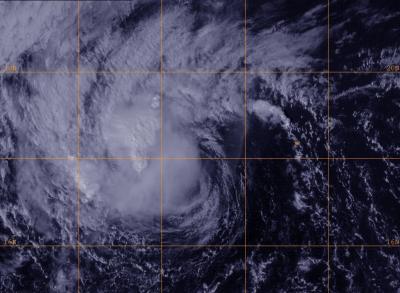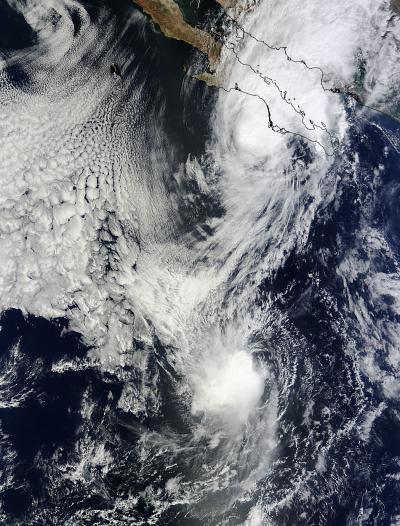Tropical Storm Priscilla lived just 3 days in the eastern Pacific Ocean making for one of the shortest-lived tropical storms of the season.
Priscilla skipped the depression phase and went from a low pressure area to a full-blown tropical storm at 5 a.m. EDT/0900 UTC on Oct. 14. Priscilla formed near 14.3 north and 115.7 west, about 705 miles/1,135 km southwest of the southern tip of Baja California. Priscilla moved north-northeast and had maximum sustained winds near 40 mph/65 kph at birth.
On Oct. 15 Priscilla had already weakened to a depression because of wind shear and the arrival of more stable air into the environment around the tropical storm.
At 5 p.m. EDT/2100 UTC, Priscilla's maximum sustained winds dropped to 35 mph/55 kph. The center of tropical depression Priscilla was located near latitude 17.7 north and longitude 117.5, about 610 miles/980 km southwest of the southern tip of Baja California

A GOES-West satellite visible image of post-tropical storm Priscilla on Oct. 15 at 2215 UTC/6:15 p.m. EDT showed the bulk of precipitation west of the center from wind shear.
(Photo Credit: Image : NRL/NOAA)
Priscilla was moving toward the west-northwest near 8 mph/13 kph and this general motion is expected to continue through Oct. 16.
A GOES-West satellite visible image on Oct. 15 at 2215 UTC/6:15 p.m. EDT that showed the bulk of precipitation west of the center from wind shear.
By Oct. 17, Priscilla was a post-tropical cyclone. The last bulletin issued by the National Hurricane Center pinpointed the center near 18.7 north and 120.9 west, about 765 miles west-southwest of Cabo San Lucas, Mexico. The post-tropical cyclone was fading fast as sustained winds dropped to 25 knots/28.7 mph/46.3 kph. The National Hurricane Center noted at 0300 UTC on Oct. 17/11 p.m. EDT Oct. 16, that Priscilla ceased to qualify as a tropical cyclone.

This MODIS image from NASA's Terra satellite shows Tropical Storm Octave in the Gulf of California and Tropical Storm Priscilla in the open waters of the Eastern Pacific. The image was taken on Oct. 14 at 2:40 p.m. EDT.
(Photo Credit: Image : NASA Goddard MODIS Rapid Response Team)
Source: NASA/Goddard Space Flight Center